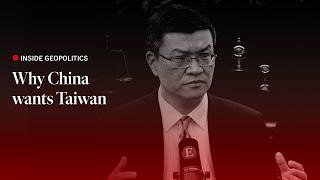| China is the world leader in facial recognition technology. Discover how the country is using it to develop a vast hyper-surveillance system able to monitor and target its ethnic minorities, including the Muslim Uighur population.
Click here to subscribe to The Economist on YouTube: https://econ.st/2xvTKdy Improving lives, increasing connectivity across the world, that’s the great promise offered by data-driven technology – but in China it also promises greater state control and abuse of power. This is the next groundbreaking development in data-driven technology, facial recognition. And in China you can already withdraw cash, check in at airports, and pay for goods using just your face. The country is the world’s leader in the use of this emerging technology, and China’s many artificial intelligence startups are determined to keep it that way in the future. Companies like Yitu. Yitu is creating the building blocks for a smart city of the future, where facial recognition is part of everyday life. This could even extend to detecting what people are thinking. But the Chinese government has plans to use this new biometric technology to cement its authoritarian rule. The country has ambitious plans to develop a vast national surveillance system based on facial recognition. It’ll be used to monitor it’s 1.4 billion citizens in unprecedented ways. With the capability of tracking everything from their emotions to their sexuality. The primary means will be a vast network of CCTV cameras. 170 million are already in place and an estimated 400 million new ones will be installed over the next three years. The authorities insist this program will allow them to improve security for citizens, and if you have nothing to hide you have nothing to fear. But not everyone is convinced. Hong Zhenkuai is a former magazine editor who was ousted by the government. He feels like he’s under constant surveillance. Already the authorities are using facial recognition to name and shame citizens, even for minor offenses like jaywalking. In Beijing they’re using the technology to prevent people stealing rolls of loo paper from public toilets, and across China police officers are now trialing sunglasses and body cameras loaded with facial and gesture recognition technology – it’s helping them to identify wanted suspects in real-time. What worries some people here is that as the technology develops, so too does the capacity for it to be abused. Some of those most at risk in this hyper surveillance future are the ethnic minorities in China. In Xinjiang province, the Chinese government is wary of the separatist threat posed by the Muslim Uighur population. According to local NGOs, an estimated 1 million Uighurs are being detained indefinitely in secretive internment camps, where some are being subject to abuse. It’s been called the largest mass incarceration of a minority population in the world today. The authorities are using facial recognition cameras to scan people’s faces before they enter markets. The system alerts authorities if targeted individuals stray 300 meters beyond their home. In the future the government plans to aggregate even more data and build a predictive policing program that imposes even tighter controls here. Without checks and balances, China will keep finding new ways to violate the human rights of its citizens. What’s already happening in Xinjiang is a warning the rest of the world must heed. What are the forces shaping how people live and work and how power is wielded in the modern age? NOW AND NEXT reveals the pressures, the plans and the likely tipping points for enduring global change. Understand what is really transforming the world today – and discover what may lie in store tomorrow. For more from Economist Films visit: http://films.economist.com/ |
Tags:









































